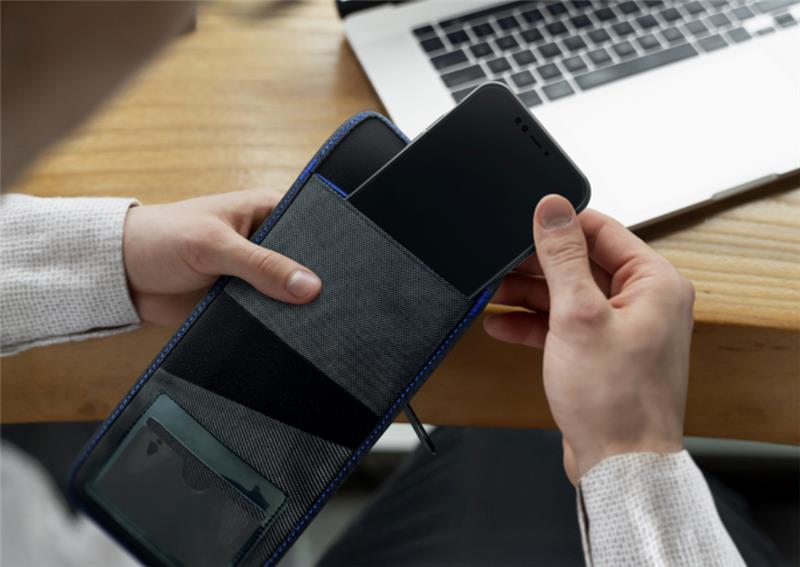
In today’s classrooms, cell phones can feel both indispensable and distracting. While mobile devices offer potential as learning tools, they often pull students’ attention away from lessons, and teachers are left trying to manage both instruction and tech distractions. Rather than outright bans, effective classroom cell phone management teaches students self-regulation and builds a culture of responsibility. Here are seven proven strategies to balance focus with flexibility, and how to support those efforts through durable, education-ready tech solutions.
1. Set Clear Policies & Communicate Transparently
Start with clarity. Define when, how, and why phones are used—or not used—in class, and make those expectations part of student, parent, and staff communications.
• For example, create a simple system like red/yellow/green signage for phone use permissions
• Establish and clearly label “cellphone hotels” or phone zones so students know where to deposit their devices during lessons.
This transparency shifts the conversation from enforcement to shared responsibility and trust.
2. Designate Phone-Free Zones or Times
Rather than permanent bans, designate parts of the day or classroom as phone-free.
• Consider central “phone check-in” areas, a modern twist on the traditional "cellphone hotel.”
• Use physical reminders or visual cues, like posters or signage, to reinforce expectations throughout the space.
This allows students access to their phones when needed, while preserving distraction-free instruction time.
3. Teach Digital Mindfulness & Self-Regulation
Rather than forcing compliance, empower students to develop healthy habits.
• Practices like digital “fasts,” grayscale apps, or Pomodoro timers teach focus, turning mindful phone use into a self-regulated tool, not a crutch.
• Use reflective exercises that ask students to track their phone use and discuss its effect on focus as an opportunity for growth and self-awareness.
These habits foster long-term tech maturity instead of short-term discipline.
4. Integrate Phones as Learning Tools, Strategically
Cell phones can still support learning when used intentionally.
• Platforms like Poll Everywhere or Socrative turn smartphones into engagement tools for real-time polling or classroom response systems.
• Socrative has been shown to enhance collaborative learning by engaging students through their own devices.
This balanced approach prioritizes learning over distraction while showing students that technology can be a tool, not just a toy.
5. Offer Alternative Activities During Phone-Free Periods
When phones are off-limits, fill the space with meaningful alternatives.
• Schools are increasingly introducing analog options, like board games, foosball, or lounge areas, to encourage peer interaction during recess or lunch.
• Even brief social or creative activities help replace screen time with relationship building.
These simple shifts yield happier students—and often, better learning outcomes.
6. Support with Practical and Durable Solutions
Managing phones can involve handling and transporting numerous devices—sometimes outside typical classroom zones.
• Building on its expertise in laptop and tablet protection, MAXCases now offers protective cell phone pouches, with or without RF blocking, to assist schools looking to develop cell phone management systems.
• Another option is to use the integrated pocket in MAXCases work-in cases to store, organize, and secure mobile devices when not in use.
• These solutions help keep devices accessible but out of sight during focused instructional time.
Beyond protecting technology, these solutions create order, minimize loss or damage, and reinforce classroom focus and efficiency.
7. Continuous Reflection & Policy Refinement
Cell phone policies don't need to be static. Instead, use observation and feedback to refine cell phone management over time.
• Collect student reflections, teacher observations, and parent input after trial runs of policies.
• Be willing to revise: Are students feeling empowered rather than punished? Have phone use distractions been reduced? Are learning outcomes improving?
Why These Strategies Work for Today’s Schools
Thoughtful cell phone management strategies consider both student autonomy and teaching imperatives; they work because they:
• Avoid punitive tension: Rather than confiscating phones, these strategies build shared norms around focus and respect.
• Balance access with boundaries: Phones aren’t demonized or ignored—they’re managed thoughtfully.
• Support student growth: Encouraging digital mindfulness teaches critical, lifelong skills.
• Reinforce learning environments: By reducing distractions and increasing engagement, classrooms become more focused and respectful—and tech stays safe, organized, and ready.
Managing cell phones in classrooms isn’t about locking devices away; instead, it’s about teaching students how to use them responsibly. Clear policies, thoughtful integration, alternative activities, and self-awareness strategies all contribute to better engagement and learning.
By blending compassionate management with smart infrastructure, schools can foster focus, respect, and digital maturity—so both students and technology contribute positively to the classroom.


